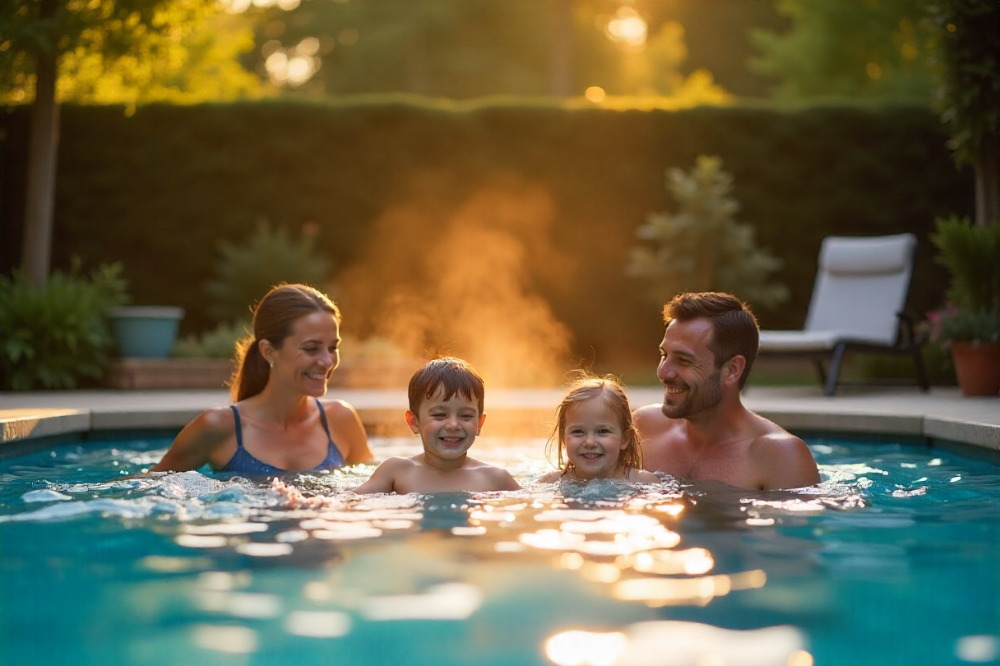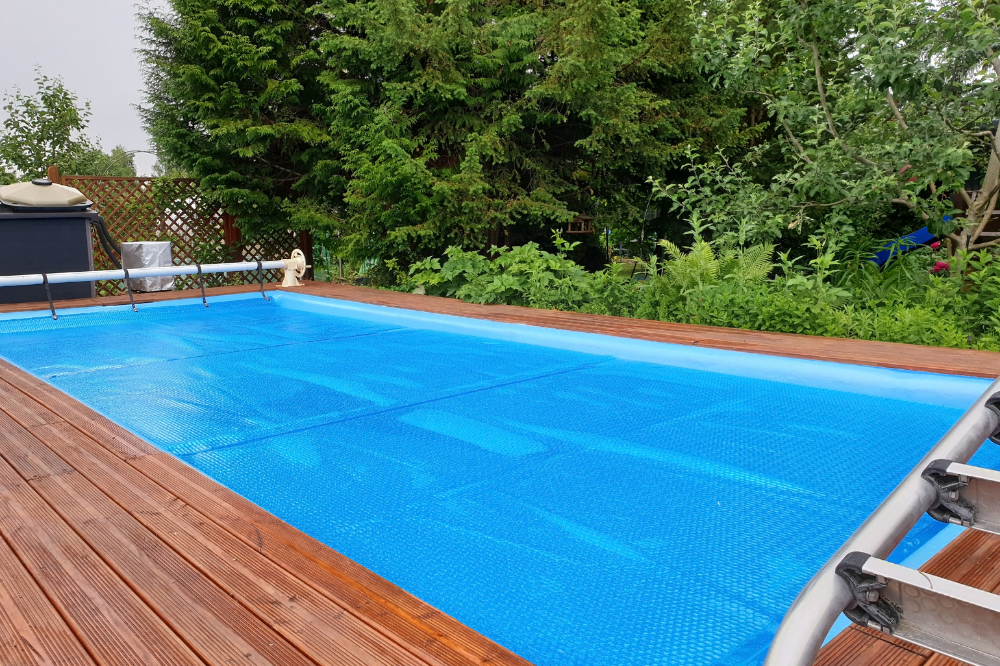How to Keep Your Pool Warm in Winter

For many Australians, the pool isn’t just for summer, it’s part of everyday living, no matter the season. However, when winter hits and water temperatures plummet, even the keenest swimmers can hesitate. The good news? With the right heating solution, your pool can stay warm, comfortable, and ready for swimming all year long. Here’s how to heat your pool efficiently, even through the colder months.
From pool heat pumps to fool-proof pool covers, there is a range of options to suit different budgets, pool sizes, and usage habits. This guide explores how to keep your pool warm in winter.
Why Warm Your Pool in Winter?
Maintaining a pool is no pretty penny, so since you’ve already invested in one, why not get the most out of it year-round?
Winter pool heating isn’t just about comfort. It also helps:
- Encourage regular exercise, even when it’s cold outside
- Extend your swimming season, making your investment go further
- Prevent frost damage to pipes, surfaces, and pool equipment in colder climates
- Reduce algae and debris buildup, especially if you maintain consistent circulation
Whether you swim for fitness, family fun, or relaxation, a warm pool makes the experience much more enjoyable, even on a chilly morning.
Heat Pumps: The Most Efficient Way to Heat Your Pool in Winter
How Do Pool Heat Pumps Work?
A pool heat pump works similarly to an air conditioner. It draws in air from the surrounding environment, extracts heat from it using a refrigerant, and transfers that heat into the water as it circulates through the heat pump.
Even in cooler weather, heat pumps can extract warmth from the air and transfer it to your pool, making them ideal for mild to moderate winters, especially in areas like coastal NSW, QLD, or northern VIC.
Heat pumps are energy-efficient as they use electricity only to move heat, not generate it, and many units can operate in temps as low as 7°C, making them reliable year-round. They are also cost-effective in the long run, with running costs lower than those generated by gas heaters.
Types of Pool Heat Pumps
1. Standard Heat Pumps
These are ideal for warmer climates or for extending your swimming season into spring and autumn. Standard heat pumps generally perform best in ambient temperatures above 15°C.
They’re:
- Affordable
- Easy to install
- Perfect for homeowners who only need moderate winter heating
Best suited for: Northern and coastal areas with mild winters, or homeowners who swim occasionally in winter.
2. Inverter Heat Pumps
Inverter technology allows the compressor inside the heat pump to adjust its speed based on the heating demand. This means:
- Faster heating when needed
- Lower energy usage during maintenance cycles
- Quieter operation
Inverter models, such as our recently released ECO Lite Range, are more energy-efficient and can maintain a set temperature without running at full power all the time.
Best suited for: Homeowners who swim regularly in winter and want to maintain a stable pool temperature with minimal energy consumption.
3. All-Season Models
Designed to operate in much lower ambient temperatures, these models typically feature:
- Larger evaporator coils
- Defrosting systems
- More powerful compressors
Cold-climate models can continue heating in temperatures as low as 7°C, and some advanced units even operate below that threshold. They’re perfect for regions where winter temperatures are consistently low.
Best suited for: Southern Australia or inland regions with cold winters, or households that want full-year swimming access.
Keep a watch out for the upcoming AstralPool Pinnacle range of high performance pool heat pumps that are engineered to deliver exceptional heating efficiency even in the chillest conditions.
Choosing the Right Heat Pump for Your Pool
Here are a few key factors to consider when choosing a heat pump:
1. Pool Size
The larger your pool, the more kilowatts (kW) you’ll need to heat it. Always size your heat pump based on volume, not just surface area. As a general guide:
- Small pools/spas (up to 20,000L): 8–10kW
- Medium pools (20,000–40,000L): 10–15kW
- Large pools (40,000–70,000L+): 15kW and above
Alternatively, you can reference our online heat pump calculator to find the perfect-sized heat pump for your pool and needs.
2. Desired Temperature
If you prefer your pool at a steady 28–30°C, you'll need a more powerful heat pump than someone who’s content with 25°C.
The perfect pool temperature for most swimmers is between 26°C and 28°C. Athletes may prefer slightly cooler temperatures, while casual swimmers often prefer warmer temperatures.
3. Operating Climate
If your region regularly dips below 10°C, consider an inverter or all-season model. Standard heat pumps may struggle to operate efficiently in these conditions, where a gas pool heater may be more suited to your needs.
4. Running Time and Usage Habits
Do you want the pool heated every day, only on weekends, or just for holidays or special occasions?
The more frequently you heat the pool, the more important energy efficiency becomes.
Pool Covers: Simple, Affordable, and Effective
While heat pumps do the heavy lifting, pool covers are a critical companion to any heating system and are often overlooked.

Why Use a Pool Cover in Winter?
Pool covers reduce evaporative heat loss, which is the number one cause of temperature drop in pools. A well-fitted cover:
- Retains up to 75% of the heat gained from a heater or sunlight
- Prevents debris from entering the pool
- Minimises water evaporation
In fact, combining a heat pump with a pool cover can cut heating costs in half.
Types of Pool Covers for Winter
1. Bubble Covers
These are light, UV-resistant covers made with air bubbles that act like insulation. During the day, they help trap solar heat; at night, they minimise loss.
- Cost-effective
- Easy to roll up/store
- Works well with or without heaters
2. Thermal Blankets
Thicker than solar covers, thermal pool covers offer better insulation and are designed for colder months.
- Higher initial cost
- Superior heat retention
- Ideal for heated pools that run year-round
3. Rigid Pool Covers
These are integrated into the pool structure and can be opened or closed with the touch of a button. Though they come with a premium price point, automatic pool covers are arguably the most convenient, with great heat retention. Rigid pool covers can also function as safety covers. Safety-rated versions are built to support weight, prevent accidental entry, and feature secure locking mechanisms for added peace of mind.
Final Thoughts: Comfort Without Compromise
Keeping your pool warm in winter doesn’t need to be overly expensive or complicated. With the right combination of technology and insulation, you can maintain comfortable swimming temperatures even when the weather turns cold.
A well-sized heat pump, especially one with inverter technology, is the most efficient long-term heating solution for Australian pool owners. Pair it with a reliable pool cover, and you’ll enjoy a pool that’s warm, clean, and ready for use no matter the season.
Ready to upgrade your winter pool setup? Explore AstralPool’s range of heat pumps or contact one of our pool heat pump experts now to bring year-round comfort to your backyard.